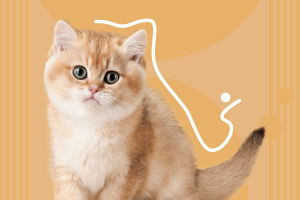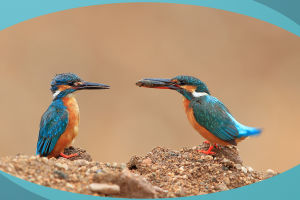A baby leopard comes into the world without any spots on its coat!They are quite helpless when newborn, and look like a little fuzzy ball of dark grey fur.They weigh only about one pound, and are about 5 or 6 inches long.
Their eyes and ears are shut, but they are vocal, making soft squeaking sounds, and their sense of smell is fairly strong, helping them stay close to mother.
The mother leopard is pregnant for 93 to 100 days, and when ready to give birth she will find a safe den and have a small litter of 1 to 3 cubs on average.
Like many cat species, the leopard babies eyes are usually a denim-colored blue, which will change to bright yellow or gold slowly over the next 2 or 3 months.
For the first 3 months of life they survive on just mothers milk, but start chewing on scraps she brings back to the den around the same time their eyes turn yellow.
At 4 months they are out and about with mom, who must teach them the skills of any great leopard.
They must learn to be quite and still before pouncing on their prey, and little leopards will practice stalking eachother, as well as twigs, stones and blowing leaves.
By the time they reach 18 months or so, they can hunt and kill small game like rabbits and jackals.
But it takes a full two years for youngsters to acquire all the knowledge they need to survive.
At 2 years old, the baby leopard is nearly 100 pounds of muscle and sinew, with all the skills needed to survive on their own.
Here are some facts about leopard.
1.Female leopards set down roots when cubs are born.
A female typically gives birth to a litter of two or three cubs. She abandons her nomadic lifestyle until the cubs are large enough to accompany her. She keeps them hidden for the first eight weeks and moves them from one location to the next until they are old enough to start learning to hunt.
They get their first taste of meat in six or seven weeks and stop suckling after about three months.
2.Leopards like their space.
They are predominantly nocturnal, solitary animals, but each individual has a home range that overlaps with its neighbors. Males have a larger range, and a single male’s range will often overlap with the range of several females. Ranges are marked with urine and claw marks.
3.They are strong climbers.
Pound for pound, the leopard is the strongest climber of all the big cats. Their shoulder blades even have special attachment sites for stronger climbing muscles. They spend much of their time in trees even when stalking prey and for eating.
Both lions and hyenas will take away a leopard’s food if they can. To prevent this, they will often store their kill high up in tree branches where it can feed in relative safety.
4.Leopards are cunning, opportunistic hunters.
These big cats have a varied diet and enjoy different kinds of grub. Their diet fluctuates with prey availability, which ranges from strong-scented carrion, fish, reptiles, and birds to mammals such as rodents, hares, warthogs, antelopes, and baboons.
5.Predatory action
When it comes to hunting for food, these big cats know their stuff! When a leopard spots a potential meal, it approaches with legs bent and head low, so as not to be seen. It then stalks its prey carefully and quietly, until it’s five to ten metres within range.
Then pounce! The leopard dashes forward and takes down its victim with a bite to the throat or neck. Small prey, such as small birds or mice, will receive a fatal blow from the feline’s paw.


